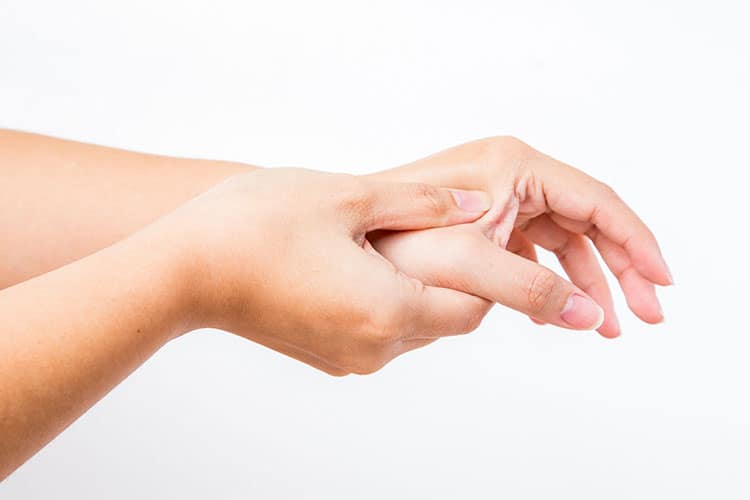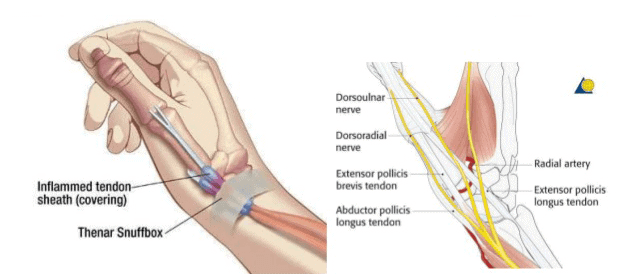De Quervain’s Tenosynovitis
De Quervain’s tenosynovitis is a painful condition that affects the tendons on the thumb side of the wrist. It usually occurs when the tendons around the base of the thumb become inflamed. Patients often complain of tenderness, pain, and weakness of the thumb and wrist.
Treatment for De Quervain’s tenosynovitis includes wrist splinting and physical therapy. Based on the severity of the condition, surgery may be recommended.
Causes of De Quervain’s Tenosynovitis
De Quervain’s tenosynovitis usually occurs due to the overuse of the wrist, causing inflammation of the tendons between the thumb and the wrist. The inflammation can cause numbness and tingling of the wrist or thumb and limit movement.
Repetitive activities involving the hand and wrist, such as working in the garden, playing golf or racket sports, spending long hours typing, or lifting your baby, can cause this condition. It is also frequently seen during pregnancy and with rheumatoid disease. The condition is mainly seen in middle-aged women.

Symptoms of De Quervain’s Tenosynovitis
Common symptoms of De Quervain’s tenosynovitis include:
- Pain and swelling near the base of the thumb
- Difficulty moving the thumb and wrist when trying to grasp or pinch something
- A sticking or snapping sensation in the thumb when moving it
Anatomy

Tendons are rope-like structures that connect muscle and bone. The two main tendons of the thumb pass through a tunnel (or sheath) located on the thumb side of the wrist. The sheath eases the thumb and wrist movement when you grip, grasp, clench, or pinch anything with your hand. Repetitive action over long periods can irritate the sheath and be the cause of swelling around the tendons. This type of inflammation restricts movement and can become painful over time.
Diagnosing De Quervain’s Tenosynovitis
Your doctor will perform a Finkelstein test to diagnose the discomfort in your thumb and wrist. You will be asked to bend your thumb across your palm and close your fingers down over your thumb for this test. Holding your closed fist up in this way, you will then be asked to bend your wrist sideways towards your little finger. If this action causes pain on the thumb side of your wrist, you likely have De Quervain’s tenosynovitis.
Treatment for De Quervain’s Tenosynovitis
Treatment for De Quervain’s tenosynovitis aims to reduce inflammation, preserve movement in the thumb, and prevent a recurrence. Initial treatment may involve:
- Using over-the-counter pain relievers, such as ibuprofen
- Immobilizing your thumb and wrist
- Applying ice to the affected area
- Avoiding repetitive thumb movements
If such treatments do not improve symptoms, cortisone injections and/or minimally invasive surgery may be recommended. If surgery is needed, your doctor surgically inspects the sheath surrounding the painful tendon(s) and then releases the pressure around the sheath so that your tendons can glide freely. After surgery, your doctor may recommend wrist splinting for a few days, followed by physical therapy to regain strength and range of movement.
